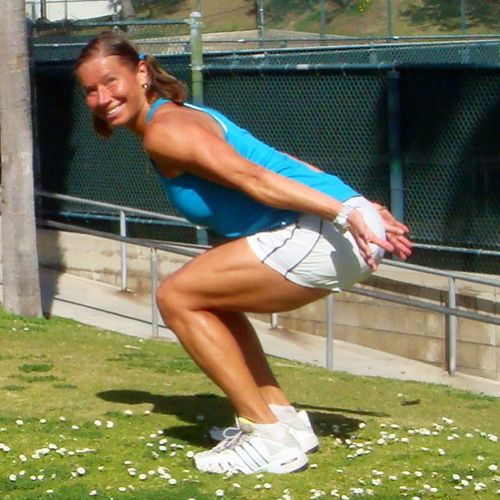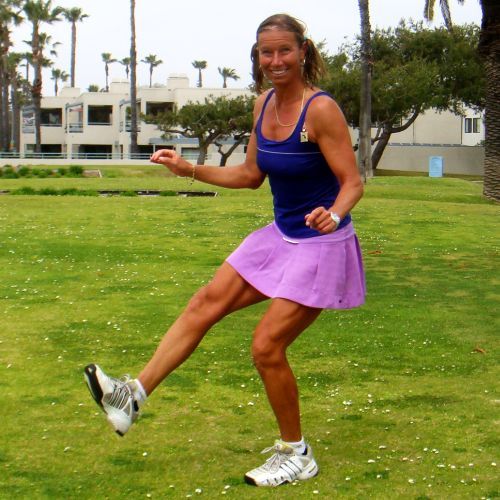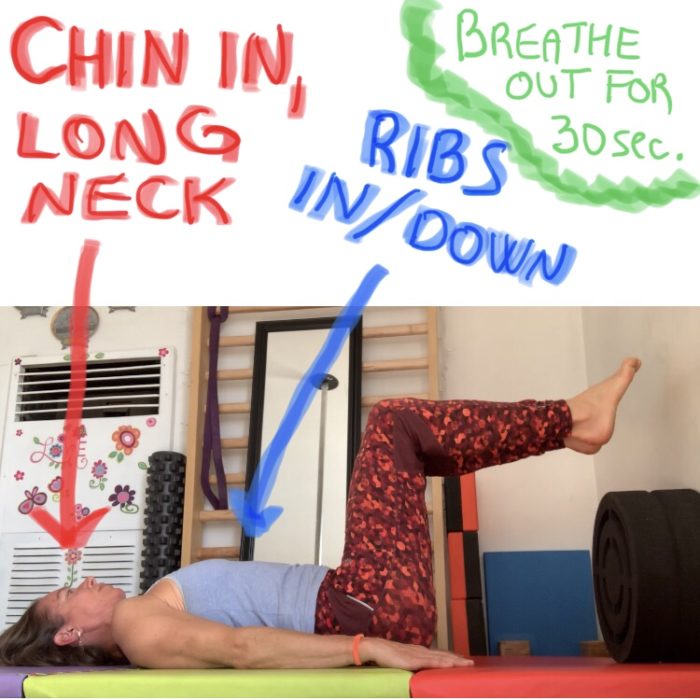The US Open has started and it is absolutely beautiful to watch the male and female tennis players move around the court with grace, power, prowess and precision. How motivating it is for us to try to be at least a little bit like them. If you watch carefully, you will notice smooth and quick footwork, strong lower body and core, and many big forehands. The players try to hit each ball with their forehands as much as possible. Rafael Nadal is often hitting his forehands from the doubles alley on his backhand side. This requires tremendous footwork and belief in your forehand. If you don’t have a big forehand, you will get in trouble hitting weak shots from that position.
Any shot you hit, always make sure that you are on balance — before your shot, during your shot and after the shot… this can be easy to do if the opponent hits the balls back to you at a comfortable pace, spin and depth. Nevertheless, as you know, such a “nice” opponent does not happen that often. His or her goal is to make it very uncomfortable for you, and if your strokes have some problems, they will when you have to move around the court in a hurry, such as on the wide ball, deep ball or short ball.
In your off-court training, you want to focus on the leg and core strength, explosiveness and good balance during the dynamic movement. The more you practice it off the court, the easier it will get on the court. You will move fast to the ball and with a good dynamic balance, and the strong legs and core will help you to ground yourself and hit powerful shots from any position on the court. A good balance is absolutely necessary.
Strong Lower Body
To improve your lower body strength and explosiveness, include squats and jump squats into your training regimen. During squat, make sure that you engage the glutes by sticking it out behind you (like there is a chair far back and you want to sit on it) and keeping your lower back neutral or slightly arched. Always keep your chest up, imagining a wire connected from the sky to your chest in any stage of the movement. During jumping squats, lower your glutes as low as your body’s flexibility allows (ultimately, you want get really deep without any strains or aches) and with a powerful muscle contraction explode and jump as high as possible. Land smoothly and slow down the movement with your leg muscles rather than “stomp” hard on the surface. You want to feel and sound quiet like a big cat.

Jump squats variations:
- Jumping forward, aka “froggie” jumps.
- Jumping from side to side with both feet together (like a downhill skier).
- Jump high up, open the legs at the peak, and close them before you land on the ground again.
- Jump high up and rotate 180 degrees at the peak. Land smoothly. Rotate opposite direction the next jump so you don’t get dizzy.
- Jump up on the bench or box. Land smoothly. You can step down, or if you feel are well conditioned, you can jump down as well.
- Split squat jump — one leg is forward, one is back. The landing looks like a lunge position. Explode into the air off both legs, switch them in the air before you land.
- Split squat jump from side to side.
Perform 30 to 40 seconds of each jump exercise. As you get fitter and stronger, work yourself up to 1 minute. Repeat for 2 to 3 sets for each exercise. As a variation, you can do each exercise just once, and then repeat the entire circle 2 to 3 times.
Strong Core
The plank and its variations are one of the better exercises for your core. They strengthen the abs, obliques and lower back, in addition to the shoulders and hips, and other stabilizing muscles. When performing plank, always make sure that your shoulders are directly above your hands (or elbows if you choose to support yourself on the elbows), the body is straight like a plank with your hips not sinking or pushing up too high. Keep your core always engaged, and breathe deeply during the entire exercise. One-minute plank is a good start, but eventually you want to work yourself up to 2 minutes or more.
Plank variations
- Plank with arm lifts. Lift the arm straight and forward, hold for a moment, and then gently place it down again. Alternate the sides.
- Plank with alternating leg lifts.
- Plank with arm and leg lift. Lift opposite arm and leg at the same time. Hold the top position for a second and gently place your limbs down. Alternate the sides. Make sure to make the movement slow and control, or you will lose your balance.
- Plank with hip twists. Twist your hips from side to side; gently touch the ground.
- Side plank. Support yourself on one hand (elbow) only and keep your body straight. Lift the upper leg slowly up and down to add difficulty.
- Plank with knee-to-elbow touch. You can touch across, or the same side.
- Plank with elevated feet. This will add more difficulty. You can elevate your feet on any of the above planks.
Perform 1 minute for each plank. Repeat the entire cycle 2 to 3 times, depending how much time you have to spend on your core routine. You can combine the leg and core routine into a full body workout. Do one lower body exercise, followed by one core exercise, and go through all exercises. Repeat the entire cycle.



